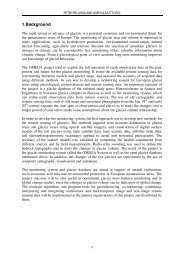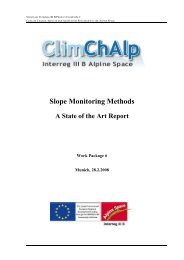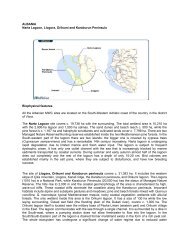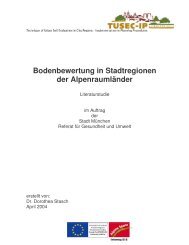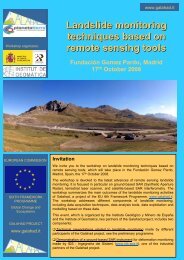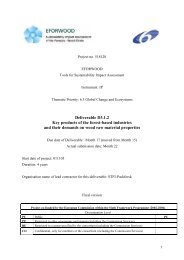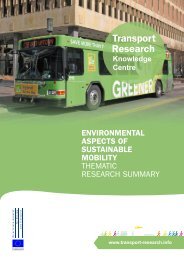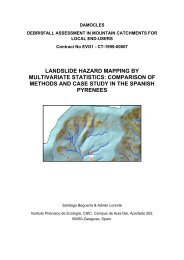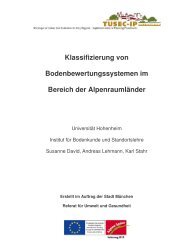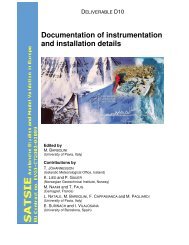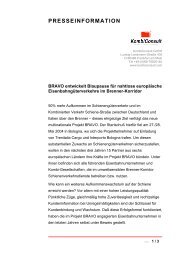Decision Support Tools - Thematic Research Summary - Transport ...
Decision Support Tools - Thematic Research Summary - Transport ...
Decision Support Tools - Thematic Research Summary - Transport ...
You also want an ePaper? Increase the reach of your titles
YUMPU automatically turns print PDFs into web optimized ePapers that Google loves.
an impact of a given policy. This tool also permits the ranking of policies on individualoutcome indicators and permits an integrated policy analysis using the systems approachby means of scorecards which show the performance of multiple policy measures ondifferent outcome indicators, and make the tradeoffs among the different outcomes(SUMMA, 2005).The application of this tool to assess the impacts of policy measures inspired by the goalsin the White Paper on transport policy has produced the following results (SUMMA, 2005):• an effective policy for achieving the goals expressed in the White Paper is toincrease the price for using the road infrastructure (it was found that a policybased on charges performed better than a policy based on subsidies);• policy for improving the level of service for road transport hampers theachievement of goals in the White Paper, because it attracts transport demandfrom rail and inland waterways;• policies addressing urban transport problems need to be tailored to the localconditions and situation in a city.<strong>Research</strong> has also developed and successfully tested an approach to design consistentpolicies and strategies for sustainable urban transport and land use. Based on a broadintegration of socio-economic, technological and environmental issues, this approachmakes use of a scenario analysis together with a set of sustainable urban transportindicators. A set of common scenarios has been defined across all case study cities usingthe basic set of indicators to specify consistent change and development of scenarios.The impact assessment includes emission calculations, environmental impacts (airquality), population exposure and public health impacts. The resulting set of indicators arethen used in a multi-criteria analysis to define sets of solutions, which are also compared ina benchmarking exercise with a much larger set of cities across Europe. The impact of themeasures included in the scenario definitions demonstrate that no single measure canhave a significant impact by itself, but only a combination of measures works best(SUTRA, 2005).By combining the SCENES, TREMOVE and CGEurope models, research has developed acomprehensive transport policy assessment framework which consists of (REFIT, 2008):• European transport objectives and indicators, and tools and expertise developedby European projects;• new additional evaluation modules to produce data for those policy objectives andindicators so far hard to address quantitatively (namely impacts on regionaldevelopment, employment, fair competition between modes, noise and airpollution exposure, personal health, safety, equity and income distribution);• a methodology for the assessment of policy packages in terms of economic,environmental, and social impacts.<strong>Thematic</strong> <strong>Research</strong> <strong>Summary</strong>: “<strong>Decision</strong> <strong>Support</strong> <strong>Tools</strong>” Page: 48 of 74<strong>Transport</strong> <strong>Research</strong> Knowledge Centre




